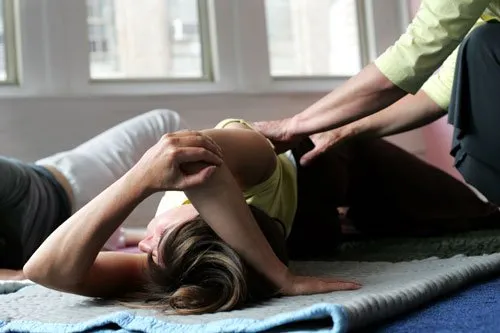In today’s fast-paced world, it’s easy to believe that progress requires pushing harder, exercising more, or forcing change. Yet sometimes the most meaningful improvements come not from big efforts, but from small, intentional adjustments. This is especially true when it comes to how we move and how we experience comfort in daily life.
That’s where the Feldenkrais Method offers something unique. By focusing on subtle, mindful movements, it helps people unlock freedom in the body, reduce strain, and rediscover comfort in everyday activities. What may look like the smallest shift in posture or movement can create profound results over time.
Why Small Movements Matter
When you think about improving your health or mobility, your mind might jump to big stretches, intense workouts, or rigid postural corrections. But the body doesn’t always respond best to force. In fact, chronic pain, stiffness, or tension often worsen when we try to “fix” ourselves through effort alone.
Small movements, on the other hand, allow the nervous system to learn. They help you become more aware of how you’re moving, where you might be overworking, and what alternatives are possible. Instead of fighting with your body, you’re giving it new choices.
For example, simply noticing how you turn your head when looking over your shoulder—or experimenting with different ways to rise from a chair—can reveal patterns of tension you didn’t realize were there. When you change these patterns through gentle exploration, comfort and ease follow.
The Role of Feldenkrais Therapy
Feldenkrais therapy is not exercise in the traditional sense. It’s a form of somatic education, designed to help people move more efficiently and with less pain. Rather than focusing on stretching or strengthening, it works with the nervous system to rewire habitual patterns.
During a session, a practitioner might guide you through small, precise movements—such as rolling your head slightly, shifting your weight, or exploring how your ribs move as you breathe. These subtle explorations increase body awareness, allowing you to notice tension you may have unconsciously held for years.
Over time, these lessons reduce strain, improve posture, and make everyday actions—like walking, bending, or even sitting at a desk—more comfortable.
Everyday Comfort Through Small Adjustments
Think about the small movements you perform daily: typing, climbing stairs, turning a doorknob, or reaching for a glass. These actions seem simple, but if done inefficiently, they can accumulate stress in your body.
Here are a few ways that paying attention to small movements can dramatically improve comfort:
- Sitting at a Desk-Instead of forcing yourself to “sit up straight,” try gently rocking your pelvis forward and back. Notice how this changes the weight through your spine and reduces shoulder tension.
- Walking-Pay attention to how your feet contact the ground. Are you striking heavily with your heels? Experiment with softer, more even steps to reduce strain in your knees and hips.
- Breathing – Place a hand on your chest and another on your abdomen. Notice where movement is restricted. Gentle awareness of your breath can release tension in your ribs, shoulders, and back.
- Getting Out of Bed-Instead of jerking upright, try rolling to one side and pushing up with your arms. This small adjustment can save your back from unnecessary strain.
Each of these examples demonstrates how awareness and small adjustments make everyday life easier and less painful.
Why Subtle Change Leads to Big Results
The key to lasting change isn’t force—it’s learning. When you give your nervous system the chance to explore new options through small movements, you expand your range of possibilities. Over time, these improvements build into a new way of being.
For people struggling with chronic pain, arthritis, or stress-related tension, these small shifts can mean fewer flare-ups, more restful sleep, and greater energy for daily activities. For others, it’s about performance—moving with more grace, fluidity, and efficiency.
This is why so many people turn to the Feldenkrais Method: it respects the body’s intelligence and works with it, rather than against it.
Feldenkrais : A Local Path to Comfort
For those in the Pacific Northwest, opportunities to explore this method are closer than you think. If you’ve been searching for Feldenkrais Seattle, you’ll find that the city offers a supportive community of practitioners and classes dedicated to helping people move with greater ease.
Seattle’s health-conscious culture makes it a natural home for holistic approaches like Feldenkrais. Whether you’re dealing with back pain from long hours at a desk, recovering from an injury, or simply wanting to move more comfortably, local practitioners can guide you through gentle lessons that create real change.
By engaging in Feldenkrais sessions regularly, you’ll not only reduce tension but also gain practical tools to carry into everyday life.
A Gentle Approach That Works
What makes this approach so powerful is that it doesn’t require you to push through pain, build muscle, or stretch to your limits. Instead, it asks you to pay attention. The very act of noticing how you move creates the foundation for change.
People often report surprising results after just a few sessions: less stiffness, greater flexibility, and even improved mood. Over time, these small but steady improvements accumulate, transforming how you feel in your body every day.
Final Thoughts
Comfort isn’t about dramatic fixes or sudden breakthroughs—it’s about creating small, sustainable changes in how you move and live. By paying attention to subtle movements, you can reduce unnecessary strain, increase awareness, and improve your quality of life.
Whether you’re curious about exploring Feldenkrais therapy for pain relief, or you’re searching for Feldenkrais Seattle resources to support your journey, the path begins with small steps. Sometimes, the tiniest adjustments lead to the greatest freedom.

